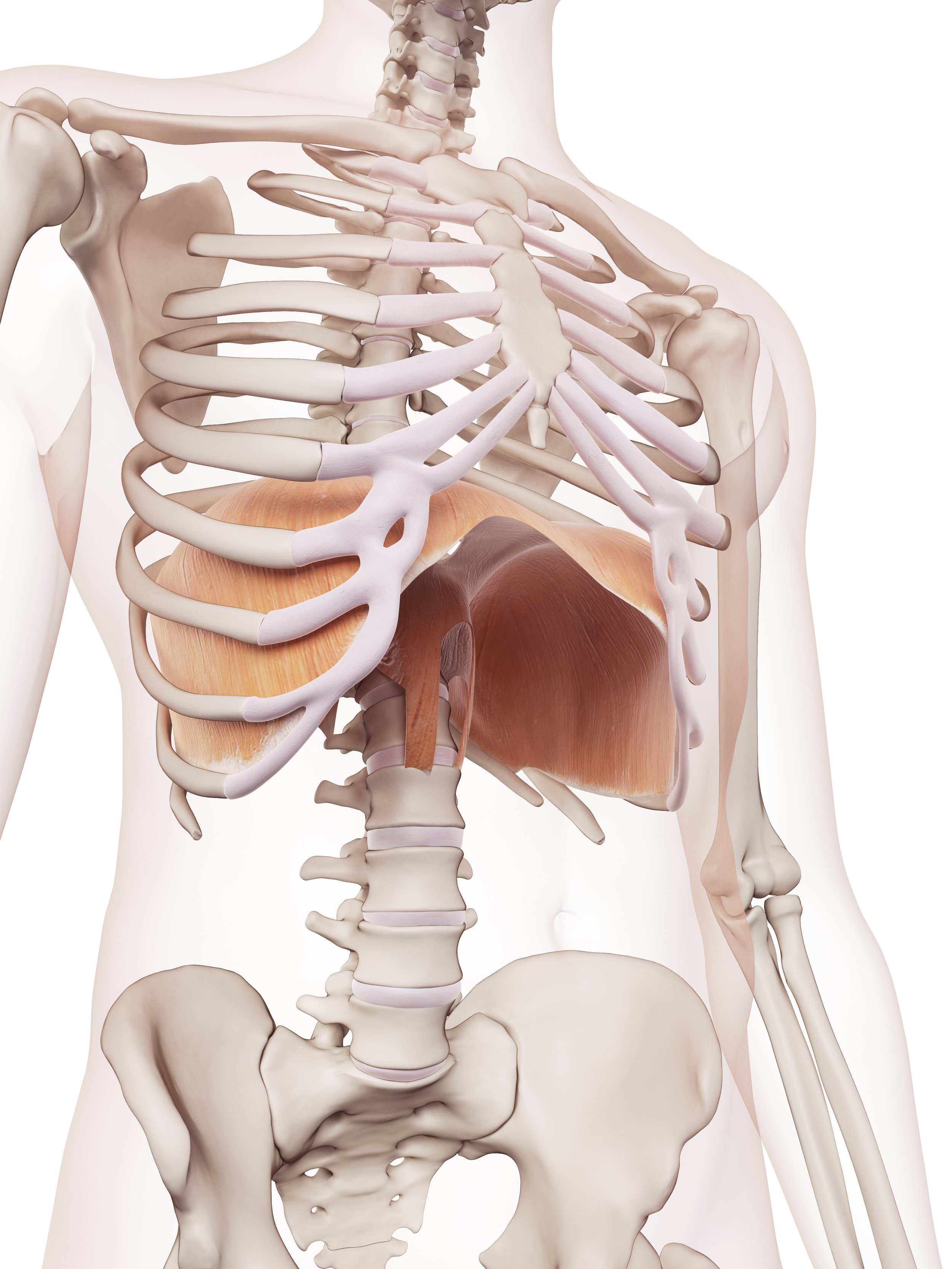Thoracic diaphragm - the key to running economy.
Busy training this winter for an upcoming running event?
Can’t get rid of that tight feeling through the front of your hips during or after a run?
Hip flexor stretches and releases just not cutting it?
It’s a common complaint I hear through the clinic, especially from athletes involved in running sports – and I often direct them to consider their breathing and thorax function! Why?
Our Physiotherapist Nicole explains more on her treatment approach, read on!
Diaphragm muscle, within the thorax.
The diaphragm is our major breathing muscle, extending across the bottom of the rib cage, separating the heart and lungs from the abdominal cavity. During inhalation, the diaphragm contracts, descends and flattens to draw air into the lungs, and on exhalation it relaxes and elevates high into the thorax (rib cage) allowing the abdominal wall to tension.
Although its major role is to orchestrate breathing, the diaphragm also acts to stabilise the lower rib cage and lower back. It forms the roof of the abdominal canister, coupling with the abdominals, deep core (transverse abdominus) and pelvic floor muscles.
When the deep core muscles are weak, or there is altered recruitment patterns of the abdominal wall the diaphragm will start to assume more of the postural stabilising role, its respiratory function can become negatively affected, creating respiratory inefficiency – not ideal for an athlete!
As the diaphragm becomes more hypertonic, its range of motion of descending and elevating in the thoracic and abdominal cavity lessens, and ultimately alters the tension of surrounding facial and muscle connections around it including that of the psoas major (hip flexor). Over time, as the psoas becomes further tensioned it draws the hip joint forward in the socket and can lead shortened stride and symptoms of persistent tightness and hip pain with running. Treating the root cause of the problem is the key to helping our running athletes excel, not just treating the symptom of hip tightness.
Other issues which can arise from inefficient breathing patterns and diaphragm activity include;
Back tightness or stiffness
Poor running posture
Accessory breathing through the neck and shoulders causing muscular tension
Further core weakness
Altered pelvic control
Pelvic floor dysfunction including bladder leakage
Decreased shock absorption through lower extremity joints
Energy loss from inefficient running technique
Reduced running economy and endurance.
"You don't run to get fit, you need to be fit to run." Diane Lee
This awesome quote just makes sense.
If you are experiencing any injury, niggle or cant seem to progress that running form, I urge you to not overlook the fundamentals of your breathing – it just may be the key to helping reduce your injuries or taking your performance to the next level.
Physiotherapy can help to determine if you are breathing correctly, or as efficiently as you can for running, and with an ISM approach to treatment, we can figure out the root cause of the problem and empower you with the knowledge and awareness necessary to make the change in your own body.



